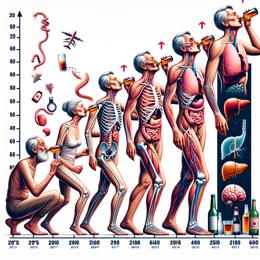Image created by AI
South Africa's Population Breaches the 63-Million Threshold with Improved Life Expectancy
South Africa has reached a new demographic milestone, with its population exceeding 63 million, a detail that mirrors the country's growing vitality and improved health outcomes. The midyear population estimates for 2024 provided by Statistics South Africa (Stats SA) paint a picture of a nation on the rise, with a populace that has swelled by 835,513 individuals —a notable 1.33% climb from the previous year. Buzzing with life and activity, nearly half of South Africans have made their homes in two provinces: Gauteng and KwaZulu-Natal, which collectively cradle about 45% of the total population.
Delving into the provincial data, Gauteng, the economic powerhouse, tops the population charts with close to 16 million residents, while the lush landscapes of KwaZulu-Natal cater to 12.3 million individuals. Following them are the Western Cape and Eastern Cape, housing 7.5 million and 7.1 million people, respectively, with Limpopo anchoring itself as the fifth most populous province with a count exceeding 5 million. In stark contrast, the expansive yet sparsely populated Northern Cape remains the home of just under 1.4 million souls.
Life expectancy, a crucial indicator of public health, has leaped forward in the country, now averaging at 66.5 years. This marks a monumental rise from the 53.6 years reported back in 2005 and is poignant evidence of significant strides in medical care, public health infrastructure and general socioeconomic conditions. South Africa's journey through the challenges posed by two major pandemics —HIV/Aids and Covid-19— could not stall the upward trend in the health and well-being of its people.
Stats SA cites pivotal factors such as the broadened distribution of antiretroviral therapy for those living with HIV, the implementation of Covid-19 vaccinations and treatments, and a reduction in infant mortality rates as instrumental in this health transformation. Aids-related deaths plummeted from overwhelming numbers in 2005 to a substantially lesser volume in 2024, while infant mortality saw a commendable decrease from 57 to 22.9 deaths per 1,000 live births since 2002.
The crude death rate (CDR), which surged to 11.1 during the peak of the Covid-19 pandemic in 2021, has since declined to 8.7 in 2024, an affirmation of the efficacious response to the healthcare crisis. Moreover, while the pandemic did initially cause a dip in the growth rate of the elderly population, it has resiliently bounced back, contributing to a society that is gradually graying but more robust.
In this populous nation, the youth under 15 make up roughly 27.5% of the population, with the majority residing in Gauteng and KwaZulu-Natal. Meanwhile, the older generation aged 60 and above accounts for 9.7%, with a significant segment preferring the urban hustle of Gauteng.
South Africa continues to showcase its resilience, having combat tedious health crises and emerging with a demographic profile that signals progress and potential for sustained growth and development.










